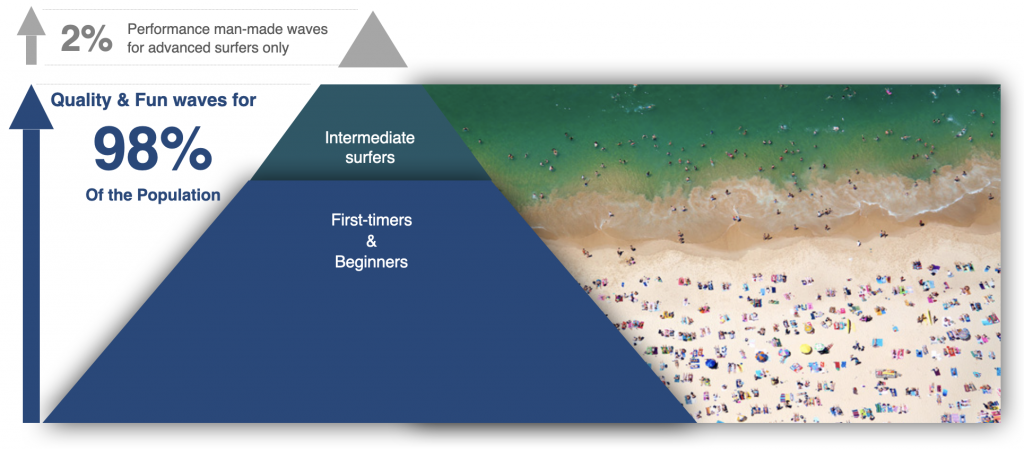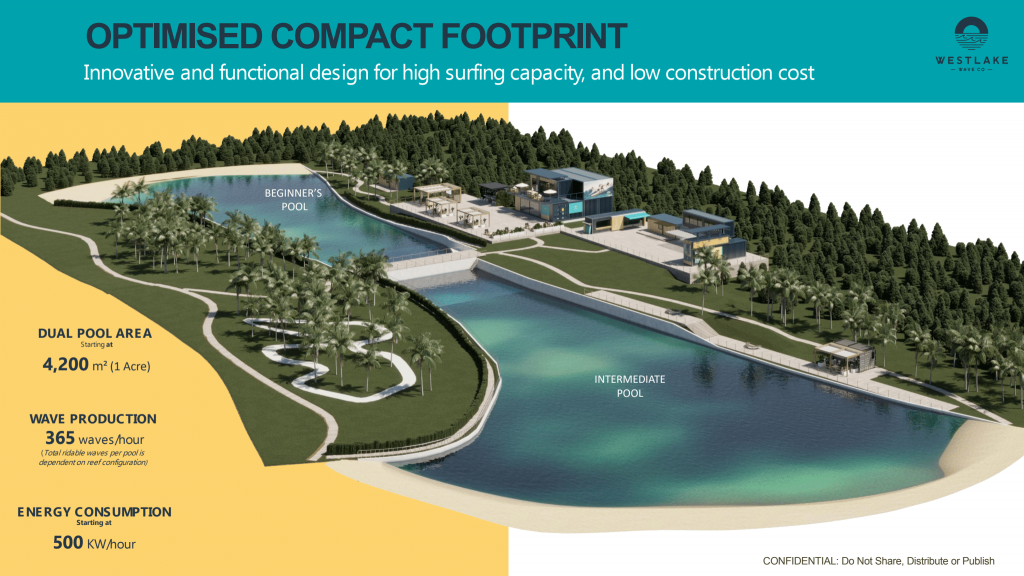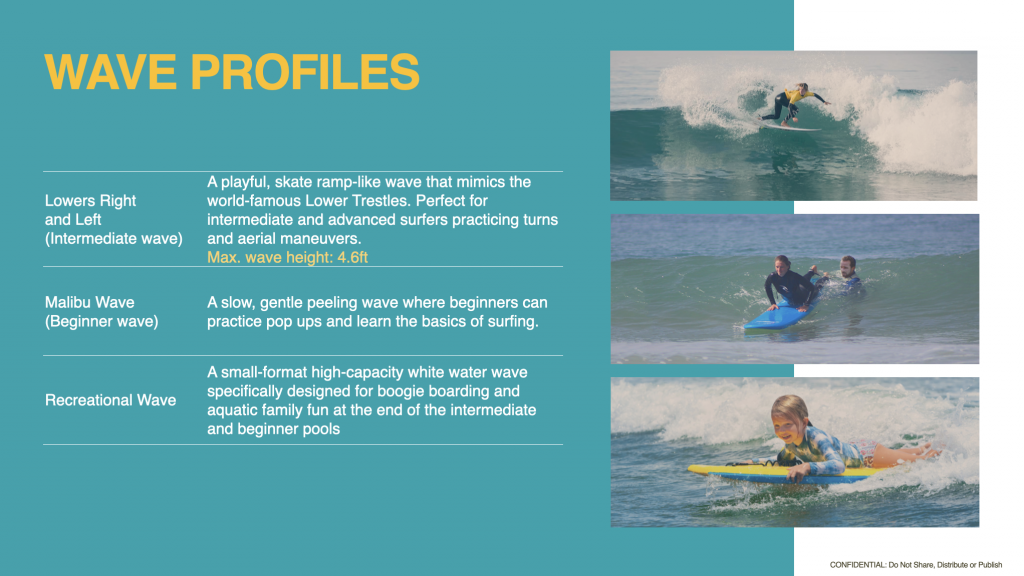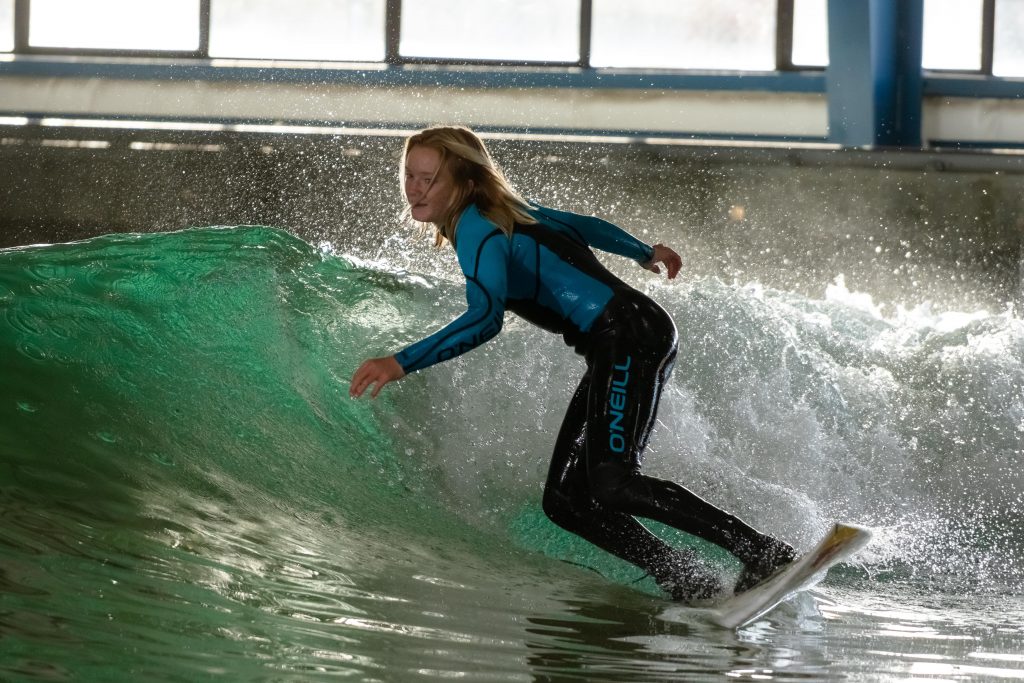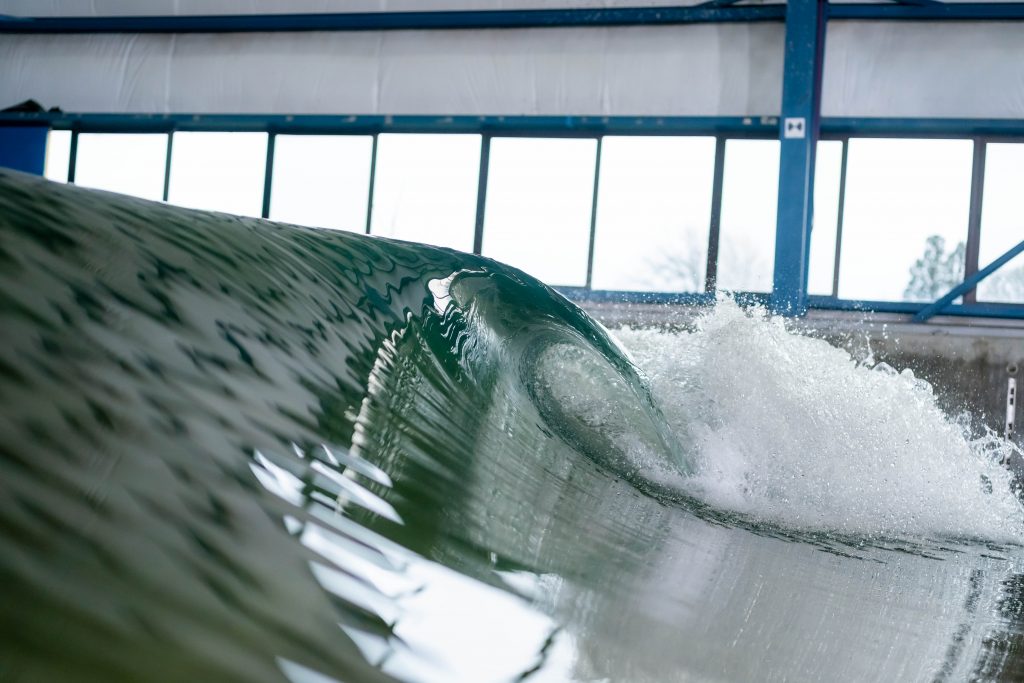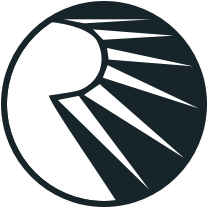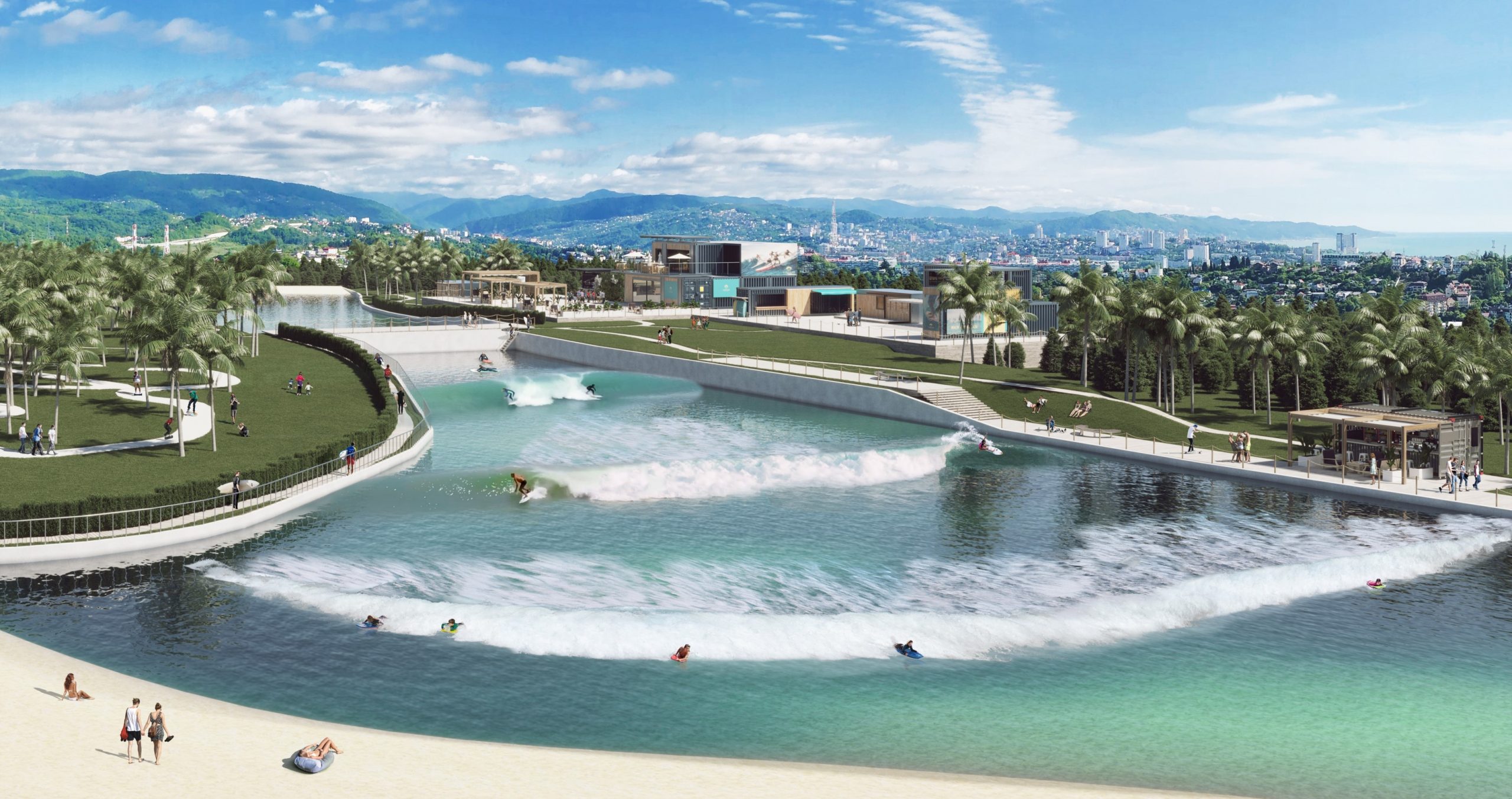
Westlake Wave Co. Founders Interview
Westlake Wave Co just announced their new wave generation technology to the world. With funding and an experienced leadership team, including Oriol Vicente formerly of Kelly Slater Wave Co., their impact on the wave pool world will be exciting to watch.
We sat down with Ori and Westlake’s chief wave scientist John Dascomb Ph.D. to learn more about their technology, vision and plans.
Peter Indelicato (PI): Hi Ori, Hi John – Great to connect with you again. I’ve been looking forward to this interview for weeks. We’ll cover a variety of topics ranging from your backgrounds to tech and business strategy, so before we jump into the tech, I’d love to learn about you guys. Ori, I’ve known you for years, but give readers a quick rundown of where you’re from, how you got into wave tech, and what you’ve done up to this point.
Ori Vicente (OV): I grew up in Barcelona and somehow got into surfing. After struggling for a few years to get decent waves and consequently developing wave-anxiety I quit my job and moved to California to learn English….and surf.
I started as an intern engineer at Wave Loch right around the time when Tom was developing the Wave House concept in Mission Beach. That was the beginning of 12 remarkable years designing, building, and installing Flowrider machines around the world. A highlight for me was designing the first ever circular Flowrider, the all-inflatable Flowrider and the dual barrel wave installed at the Yas Waterworld park.
Then the Kelly Slater team came along with an exciting and challenging project. They had a secret site somewhere in the Central Valley, a small circular prototype in Culver City and 9 years of intense CFD wave engineering. It was a very ambitious project with no guarantee of job security…how could I resist? Dream big or go home, so I joined the team and helped build the Surf Ranch 1.0. The rest is forever part of surfing history.
It was certainly an amazing 5-year experience working with an incredibly talented team of professionals. I have great memories of 45-seconds long perfect barrels rolling in Lemoore. Unfortunately the economics were not there, and that is precisely what inspired the vision for Westlake Wave Co.
PI: John, we’ve only recently met…. How did you get into the wave pool business and how did you and Ori end up teaming up?
John Dascomb (JD): Ori and I were introduced through a mutual friend with a shared passion for surfing. We were both looking to start our own company. Ori knows the wave business better than anyone, I have the technical skills to design a wave, and my wife Kristina has the business management experience. The three of us were the perfect team to build Westlake Wave Co.
PI: There are plenty of players trying to break into the wave pool tech market. What did you guys (and your investors) notice that made you think there was room for one more?
OV: The goal for most existing wave companies is to first build the perfect barreling wave, and then try to make the economics work. We took the opposite approach. We spent a year conducting extensive research to understand the market and then we built an economic model that makes sense for developers. Only then did we set out to design the wave and the dual pool that best served that market and fit our economic model. From day-one, our objective has been to design an amenity that pays back investors in 4 years or less.
We saw that nobody was creating a curated family friendly experience that everyone from novices to experienced surfers could enjoy. Aiming for a larger market is what supports our operational and economic models. We exist to bring quality and fun waves that everyone can enjoy at affordable prices. That is our version of a perfect wave. with
PI: Let’s get into the tech. Based on the renderings, every pool has two sides with a series of modules separating them. What’s going on in those modules and in the pool contours to make Westlake work?
JD: We have a bridge in the center of our pool that houses our wave technology. Under the bridge are a series of paddles that push waves into each of the two pools. Each pool will get 200 waves an hour. Our primary wave type is a 4.6 ft tall peeling wave. The ride length is dependent on the width of the bridge. We offer a 65 ft wide option that provides a 10 second ride, up to a 100ft bridge that offers a 14 second ride. The cost will be set by the park operator, but we expect it to be much lower than what is offered by current wave companies due to the lower investment needed for the facility, lower operational costs and high surfing capacity.
Our dual pool configuration featuring a beginner pool on one side and an intermediate lower’s style wave on the other side can comfortably accommodate up to 54 surfers per hour, with a minimum wave count per surfer of 10 to 12 waves per session.
PI: What’s the running costs/power consumption?
JD: My background is in renewable energy, so energy efficiency is very important to me. The electrical cost of our facility will only be about 18 cents per wave. To achieve this, everything about our wave was designed to be as efficient as possible.
Wave size is the single largest factor affecting electricity cost. Electricity costs increase exponentially with wave height. (A 6.5ft wave uses twice as much energy as a 4.5ft wave.) We chose a max wave height that optimizes user experience and keeps electricity costs reasonable.
Another energy savings feature is that our walls don’t open until the end of the wave. This maintains wave height for longer, so we can use less paddles to generate the swell. We also chose the most energy efficient wave tech available. Having two pools actually increases the efficiency of paddle technology. This is because the water on the backside of a paddle helps push it forward. When you combine all these factors you get the most efficient artificial wave pool available.
Our technology can deliver bigger waves, and our team can design reefs for more advanced surfing, but the true sweet spot between quality-fun waves and responsible economics is in that 4-5ft range.
PI: What kind of waves can we expect to ride in the various configurations?
JD: Our flagship wave will be the peeling reef break wave. We are designing it to be a “lowers” type wave with a combination of fast and slow sections. The height can be adjusted from 4.6ft down to a crumbly 2ft for first timers. We also offer a Waikiki style wave. This will provide a 3 ft party wave that many people can share and enjoy while learning how to pop up in a relaxed environment. When they feel comfortable enough, they can switch pools and do their first angled takeoffs.of
PI: You’ve obviously done some small scale testing in addition to computer modeling. Can you tell us about those?
JD: We invested a year running computer simulations to perfect our reef. We designed it to provide fun rides with a variety of sections. A key element to the wave is a user-friendly take off to ensure everyone can get to their feet.
Once we were confident in the computer simulations we built a scale prototype. The goal was to verify that the reef would perform as intended. We were all very impressed at how well it worked. The first wave that pumped out created a perfect 2 ft barrel. Creating barrels is relatively easy and fun, but we will have to dial the intensity back for our target market. The degree of accuracy between our simulations reality is truly astonishing. We now have the confidence that what we design and test in the computer will translate in the pool.
We invited some talented groms including U16 US Champion Caitlyn Simmers to come surf the prototype. After our team of engineers and consultants dedicated a year to running computer simulations, finally watching kids shred on our wave was very rewarding and a total blast.
OV: We are a startup, but we have over 17 years of experience designing and delivering waves around the world. When you add the financial backing and guidance of a successful developer- Westlake International, we have every opportunity for success. All our hard work has started to bear fruit. We managed to secure our first project even before we had a functional website and currently have six additional projects in active negotiations. Our significantly lower CAPEX and OPEX, and access to a much larger market underscore the best features of our robust economic model.
PI: If Westlake is like any startup I’ve worked for, that funding is limited. So what do project prospects look like? How serious are they? Deposits paid, ground broken, etc.
OV: We have NDAs with all our projects and prospects so we are limited in what we can disclose. What we can say is that we are in a very strong position to have 2 projects under construction by Q2 2022. The limiting factor at this point is not funding but getting those projects entitled and shovel ready.
PI: As a startup, strategic advantages that provide reliable differentiation can be a powerful tool in business. Do you own any IP or proprietary designs that set you apart from the rest?
OV: Actually, we recently got approval for our dual pool reef configuration patent. We are working to expand those protections with additional claims that will secure our space in the industry. This is obviously a big milestone for us and for our investors, as well as proof of our commitment to make a big splash in this industry.is
PI: “Big Splash”… 😂… That’s fantastic. Webber had one on his tech and, as you probably remember, that got messy with KSWC, so I’m sure you know what it takes to create a defensible wave pool tech patent. So what next? What will you guys be working on next week? All biz dev now? More modeling and testing?
OV: We are laser-focused on delivering our first commercial scale project and showing the world our version of the perfect wave.
Our prospects/partners have deposited a great deal of confidence in us and our top priority is to make sure everything is built with the best quality and on time.
If we can successfully tap into the economic potential of the beginner-intermediate market, we believe we can scale up very quickly.
PI: Personally, I couldn’t agree more. Thank gentlemen for your time, and good luck with your venture

